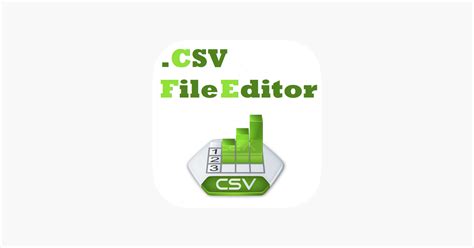Mediadoc filelister
Author: L | 2025-04-24

MEDIADOC FILELISTER.EXE / mediadoc filelister.exe instalasi Jalur C: Program Files Media Doc FileLister MediaDoc FileLister.exe File deskripsi MediaDoc FileLister

MediaDoc FileLister.exe file information what is MediaDoc FileLister
FileLister: Use Ctrl + P to access print preview and dialogue.Export file: Choose "File" then "Export" to save the output to a .CSV, .HTML, .TEXT, or other file format. Open this file in another application like Excel or Word to print.And that covers the full process of using FileLister to flexibly configure and print directory contents!Compared to the Command Prompt method from earlier, FileLister‘s advantages are:Graphical and intuitive interfaceFully customizable outputIntegrated printing and exportingReusable templatesThe disadvantages:Requires downloading and learning third-party software Potential cost if choosing paid "Pro" versionMore complex setup with steeper learning curveOverall FileLister is extremely versatile for printing all types of specific folder content details. Let‘s contrast now with DirLister for simpler needs.DirLister WalkthroughDirLister provides a fast way to print a simple list of files inside a directory, with fewer customizations compared to FileLister. Here is how to use DirLister:Download and open DirListerClick "Open" and select folder Specify text file output Choose output optionsClick "Make List"Print text fileWhile simpler than FileLister, DirLister still offers a handful of helpful options covered next…Opening Target DirectoryInstead of a folder tree, DirLister has a text field for inputting the exact directory path:Either manually type the full path (e.g. C:\Users\Max) or use the "…" browse button to navigate to the target folder.Choosing Text File OutputYou must also specify where to save the output text file containing the printout by filling in the "Output" field:I named my text file folder-contents.txt but you can choose any filename.Output OptionsDirLister has very basic configuration options compared to FileLister:Checkboxes allow including Name, Size, Date, Time, and Type details in plaintext format.Leave all unchecked to just print a simple list of filenames only.Generate Text File ListingWith folder chosen, output set, and options selected – click "Make List" to have DirLister scan the directory and save a .TXT with the MEDIADOC FILELISTER.EXE / mediadoc filelister.exe instalasi Jalur C: Program Files Media Doc FileLister MediaDoc FileLister.exe File deskripsi MediaDoc FileLister Contents printed.This generates our output text file with the details chosen in Options:Much simpler than FileLister‘s rich output, but gets the job done.Printing or Opening OutputTo wrap up, open the generated text file in an application like Notepad and use Ctrl + P to access printing dialogue.Or leave the file saved digitally for archive/access later.DirLister has benefits around speed and simplicity compared to FileLister:Very easy to use and understandQuickly saves simple printout of filesLess setup and fewer choices to makeDownsides of DirLister:Very limited configuration optionsRequires manually opening output file to printLess details and structure than FileListerSo in summary – DirLister excels at fast, no-frills printing folder contents to text, while FileLister enables extensively customized and polished reports.Conclusion and RecommendationsPrinting the contents of directories is made easy on Windows using either built-in Command Prompt or third-party tools like FileLister and DirLister.Here is a quick recap of the what we covered in this guide:Command Prompt – use dir and > output.txt right from terminal FileLister – robust customizable graphical interfaceDirLister – simpler plaintext output in secondsThe best approach depends on your specific needs:For one-time informal printing, leverage Command Prompt If you will frequently print folder details, invest time with FileLister templatesDirLister fits basic recurring documentation of directory contentsHopefully this gives you a comprehensive overview of getting folder contents printed on Windows! Let us know if you have any other questions.Comments
FileLister: Use Ctrl + P to access print preview and dialogue.Export file: Choose "File" then "Export" to save the output to a .CSV, .HTML, .TEXT, or other file format. Open this file in another application like Excel or Word to print.And that covers the full process of using FileLister to flexibly configure and print directory contents!Compared to the Command Prompt method from earlier, FileLister‘s advantages are:Graphical and intuitive interfaceFully customizable outputIntegrated printing and exportingReusable templatesThe disadvantages:Requires downloading and learning third-party software Potential cost if choosing paid "Pro" versionMore complex setup with steeper learning curveOverall FileLister is extremely versatile for printing all types of specific folder content details. Let‘s contrast now with DirLister for simpler needs.DirLister WalkthroughDirLister provides a fast way to print a simple list of files inside a directory, with fewer customizations compared to FileLister. Here is how to use DirLister:Download and open DirListerClick "Open" and select folder Specify text file output Choose output optionsClick "Make List"Print text fileWhile simpler than FileLister, DirLister still offers a handful of helpful options covered next…Opening Target DirectoryInstead of a folder tree, DirLister has a text field for inputting the exact directory path:Either manually type the full path (e.g. C:\Users\Max) or use the "…" browse button to navigate to the target folder.Choosing Text File OutputYou must also specify where to save the output text file containing the printout by filling in the "Output" field:I named my text file folder-contents.txt but you can choose any filename.Output OptionsDirLister has very basic configuration options compared to FileLister:Checkboxes allow including Name, Size, Date, Time, and Type details in plaintext format.Leave all unchecked to just print a simple list of filenames only.Generate Text File ListingWith folder chosen, output set, and options selected – click "Make List" to have DirLister scan the directory and save a .TXT with the
2025-04-17Contents printed.This generates our output text file with the details chosen in Options:Much simpler than FileLister‘s rich output, but gets the job done.Printing or Opening OutputTo wrap up, open the generated text file in an application like Notepad and use Ctrl + P to access printing dialogue.Or leave the file saved digitally for archive/access later.DirLister has benefits around speed and simplicity compared to FileLister:Very easy to use and understandQuickly saves simple printout of filesLess setup and fewer choices to makeDownsides of DirLister:Very limited configuration optionsRequires manually opening output file to printLess details and structure than FileListerSo in summary – DirLister excels at fast, no-frills printing folder contents to text, while FileLister enables extensively customized and polished reports.Conclusion and RecommendationsPrinting the contents of directories is made easy on Windows using either built-in Command Prompt or third-party tools like FileLister and DirLister.Here is a quick recap of the what we covered in this guide:Command Prompt – use dir and > output.txt right from terminal FileLister – robust customizable graphical interfaceDirLister – simpler plaintext output in secondsThe best approach depends on your specific needs:For one-time informal printing, leverage Command Prompt If you will frequently print folder details, invest time with FileLister templatesDirLister fits basic recurring documentation of directory contentsHopefully this gives you a comprehensive overview of getting folder contents printed on Windows! Let us know if you have any other questions.
2025-04-05Of contentsPrint preview or save fileLet‘s explore the major steps and options in more detail:Download and InstallFirst, download FileLister from the developer‘s website. Run the installation wizard, leaving all settings at their defaults.Once installed, FileLister will be accessible from the Windows Start Menu like any program.Set Up TemplateWhen you first launch FileLister, you will be presented options to configure a template – a saved setting for how the output will look:Click the "File" menu then choose "New" to create a new templateGive template a descriptive name like "Folder Contents Printout"Click OK to save template This template can be reused instead of reconfiguring each time.Select Columns to DisplayNext, still within your new template, click on the "Columns" tab. This allows you to customize exactly what details about each file show up in the output.Scroll down the list of available columns on the right. Check the box next to any details you want to include:Name – The filenameSize – File size in KB Type – File extension type Date Modified – Last change timestampAnd many more like attributes, owner, links, etc.Tip: Name, Size, Type, and Date Modified are good basic options.Uncheck any columns you do not want to print. Click "OK" when done customizing columns.Select Folder to ScanNow within the FileLister interface, choose the target folder you want to print the contents of:Navigate the folder directory tree on the left, then click your target folder.Generate List of ContentsWith your folder selected and template configured, click "Create List" on the ribbon toolbar:This will instantly generate a listing of all files in the folder, using the columns and options defined in your template.The output contains only the details you selected, in a readable spreadsheet-like format.Print or Export Output FileTo actually print the now generated list of your folder‘s contents, you have two options:Print from
2025-04-19Can modify these software information without notifying us. Even if we try to check the files for viruses ourselves, we cannot guarantee 100% that they are clean. So, for your complete protection always check downloaded files for viruses, spyware and malware.1 - ABCFastDirectory 1.3 ABCFastDirectory allows you to easily create professional looking directories in minutes! You can create telephone-like directories, or directories with family photographs for church groups, softball clubs, or other organizations!VistaGlance 1.1 Find document or run program you want within several seconds since you firstly think of it. Super fast indexing, super fast search by file names, attributes and tags. Apply smart filtering and sorting of results, cut, copy, delete, drag&drop files.RunIt! 2.01 RunIt! stays in your system tray in the form of an icon and with a single keypress you can either run any program on your computer according to keywords you have selected or perform websearches and check mail faster and easily than before.Pcap Analyzer Tool For WindowsPersonal Knowbase Reader 3.0.5 Personal Knowbase Reader is a viewer for data files created by Personal Knowbase freeform notes manager software. Share Knowbase content with friends or co-workers, even if they don't have a copy of Personal Knowbase. Free for personal use.InsideCAT Lite Edition 5.00 Automatically index all your disks collection (CD, DVD, BD, HD, USB, CD-Audio...). No typing needed!. Find files in a fast way with powerful search types. Never lose a file again!. File metadata extraction. A must-have if you commonly burn CD/DVD/BD.Filelister 3.0 Filelister has its
2025-04-19To Text FileTo capture the folder contents printed in the Command Prompt window, you can pipe the output of dir to a text file:dir > folder-contents.txtThis creates a text file called folder-contents.txt containing the listingYou can replace the filename with any name you want Step 5: Open Text File to ViewTo view the printed directory contents, open the generated text file in an application like Notepad or Wordpad:notepad folder-contents.txtThe text file will contain detailed information on every file:Including name, size, type, modification date, and more.Step 6: Print Text File (Optional)If you want a physical print out of the directory contents for filing or sharing, you can print the text file using the Ctrl + P keyboard shortcut when viewing it in an application.The Command Prompt method allows printing folder contents quickly using built-in Windows tools. The key advantages of this technique are:Simple and fast process with no additional software neededDetailed file information included for each itemOutput can be saved to reference later as a fileFolder structure visually outlinedThe downsides to be aware of:Requires some comfort with command line interfaceMore difficult to customize exactly which details are printedSaving output to text file is an extra step before printingNext, we‘ll compare the Command Prompt approach to utilizing third-party tools.Method 2: Printing Contents with Third-Party ToolsThere are free third-party programs available that offer more flexibility when printing folder and directory contents on Windows. Two popular options are:FileLister: Highly customizable output in graphical interfaceDirLister: More basic printout with fewer frillsThese tools function similarly overall, but have some differences in features and usability.FileLister WalkthroughFileLister provides extensive configuration choices wrapped up in an easy-to-use Windows application. Here is an overview of using it to print directory contents:Download and install FileListerRun FileLister application Create new template for output Select columns to include Choose folder to scanGenerate list
2025-04-08